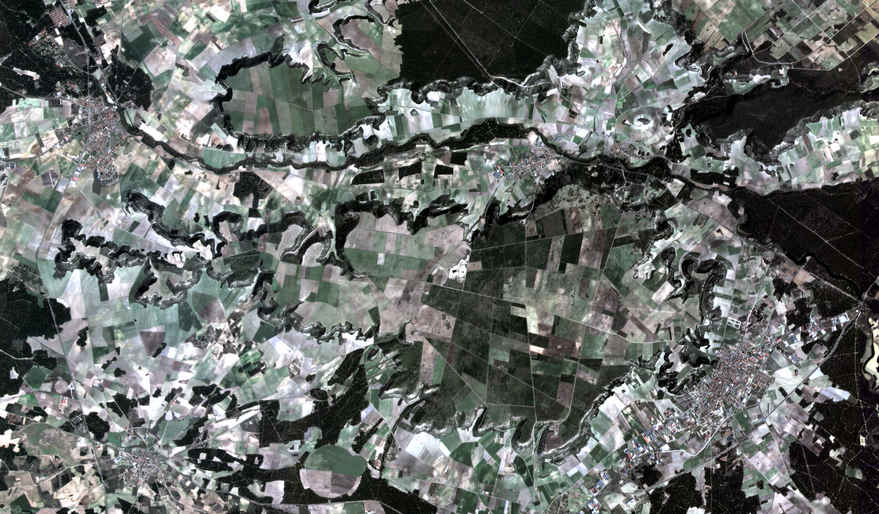SAN FRANCISCO – EOS Data Analytics is acquiring imagery from the first satellite in the Silicon Valley company’s agriculture-focused constellation. The satellite, built by Dragonfly Aerospace of South Africa, also served as the first on-orbit propulsion demonstration by Ukrainian startup Space Electric Thruster Systems.
EOSDA, Dragonfly and Space Electric Thruster Systems (SETS) are part of the Noosphere space group, established in 2015 by international entrepreneur Max Polyakov to create an integrated space business. Another Noosphere Ventures company, Flight Control Propulsion, oversaw 3D printing of components and the satellite structure for EOS Sat-1.
“This is truly an international effort by private companies that have one single leadership,” Artiom Anisimov, EOSDA CEO and Noosphere Ventures Partners president, told SpaceNews.
By the end of June, EOSDA expects to begin selling EOS Sat-1 imagery commercially and offering priority tasking for customers in the United States, Canada, Southeast Asia and Australia. Imagery and analytics combined in products aimed at the agriculture market will be available in July, said Rim Elijah, EOSDA vice president of sales.

EOSDA, which started as a software company, designed its constellation and sensors to provide reliable crop-classification and yield-prediction tools for agriculture and forestry.
Dragonfly “built the satellite with the bands that are lacking in the market,” Anisimov said. “When we combine them with what’s already out there, we have this unique product offering. With AI modeling, everybody who has access to the same data will have very similar models. Once you have your proprietary dataset that makes all the difference in the world.”
EOSDA’s goal is to provide predictive modeling and recommendations to farmers.
“Customers want to know why things are happening and what should be done,” Elijah said. “Are problems as a result of pests, disease, fungus, climate change or bad practices from the farmers themselves?”
EOSDA also is preparing to feed data from EOS Sat-1 into EOSDA LandViewer, an online source for current and historical imagery that extends beyond the agriculture sector to serve markets like real estate and defense.
SETS Electric Propulsion
SETS, founded in Dnipro in 2016, is establishing a European site for final assembly of its Hall-effect thrusters, which fired for the first time on EOS Sat-1.
“We waited until we got this flight heritage to make the next move,” SETS CEO Viktor Serbin told SpaceNews. “Now we will work for the expansion of the company.”
SETS has developed two propulsion systems. Both feature Hall-effect thrusters, but SETS’ proprietary cathodes and power processing units have made the technology “a little bit more efficient,” Serbin said. “In the space industry, each percent of efficiency is important.”
EOS Sat-1 is relying on SETS Hall-effect thrusters for orbit maintenance and eventual deorbit. Obtaining consistent Earth imaging for high-precision agricultural applications requires reliable and efficient propulsion, Serbin said.
In the future SETS plans to sell off-the-shelf and bespoke propulsion systems “to become a part of the worldwide market for propulsion systems,” Serbin said.
EOS Sat-1 was launched Jan. 3 on the SpaceX Transporter-6 rideshare flight. The company intends to launch two more satellites per year until the seven-satellite constellation is completed.
“We’re exploring ways to attract third-party capital to accelerate the deployment,” Anisimov said.
